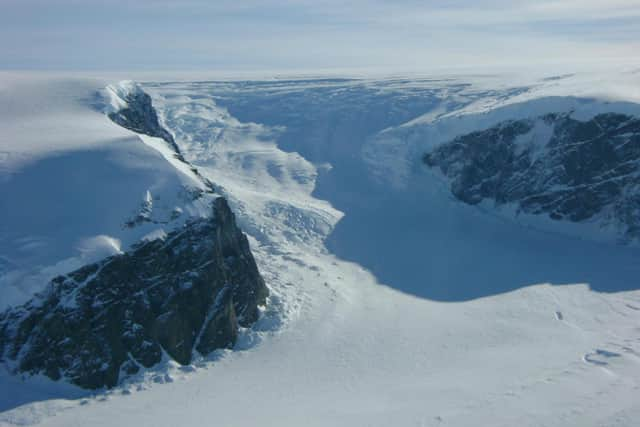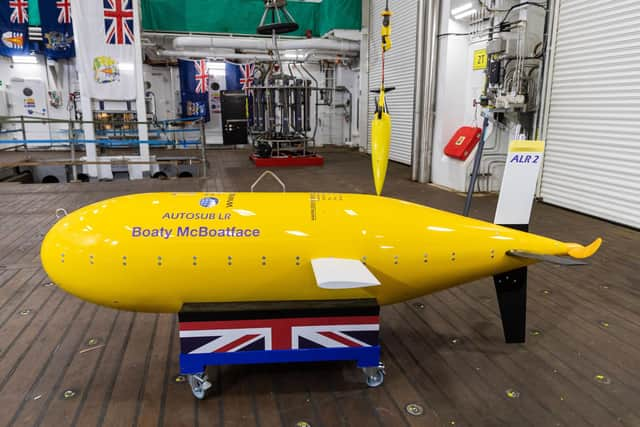Scottish scientists join Antarctica trip to study 'doomsday glacier' with yellow submarine Boaty McBoatface
The 65-day voyage will investigate atmospheric and oceanic conditions around the gigantic Thwaites Glacier – one of the biggest in Antarctica, stretching across 74,000 square miles.
Experts have warned that recent dramatic changes at the glacier could have a catastrophic effect on global sea levels, raising the height by up to 65cm.
Advertisement
Hide AdAdvertisement
Hide AdThe voyage, aboard the icebreaker Nathaniel B Palmer, is part of the International Thwaites Glacier Collaboration (ITGC, a five-year project that is jointly funded by the UK's Natural Environment Research Council and the US National Science Foundation.


The team, led by academics from the University of East Anglia (UEA), will carry out a wide range of studies around the Thwaites ice shelf to gain new insights into the glacier’s behaviour.
The infamous Boaty McBoatface and a fleet of other robot submarines will be deployed to carry out pioneering underwater surveys beneath the ice.
Dr Rob Hall, from UEA, is the chief scientist in charge of the voyage.
“It’s very exciting, though also daunting, to be leading this campaign to make critical measurements of the ocean under and around this vulnerable ice shelf,” he said.


“The team have completed a month of quarantine to ensure everyone is safe, and now we’re looking forward to putting our wide range of scientific instruments into the water to see what we will learn about how the ocean melts the ice shelf from below.
“We’re already monitoring the sea ice extent carefully to devise the best way to access the area, because even this powerful icebreaker ship can’t get through thick sea ice.”
The National Oceanography Centre (NOC) is providing innovative technology as part of the ITGC’s TARSAN project.
Advertisement
Hide AdAdvertisement
Hide AdNOC’s Dr Alex Phillips said: “Our science and engineering teams have made enormous strides in pushing the boundaries of how we explore the world’s oceans with underwater technology.“Autonomous underwater vehicles are vital equipment to enable oceanic research and we’re so excited to be joining the wider ITGC team with Boaty McBoatface, which will travel further under the Thwaites Glacier than ever before.”
Alongside the robot teams, scientists from University of St Andrews will tag seals to gather data on ocean temperature and saltiness around the ice shelf over the next nine months of the Antarctic winter.
At the same time researchers working under the ITGC’s THOR and ARTEMIS projects will collect sediment cores, conduct seabed surveys and measure the chemical properties of the seawater.
Thwaites is already depositing 50 billion tonnes of ice into the ocean each year, accounting for around four per cent of current sea level rise worldwide.
But it’s feared a floating section of ice at the front of the glacier, which that had previously been relatively stable, could “shatter like a car windscreen” in the very near future – possibly in the next five to ten years.
The team set off from Punta Arenas in Chile on 6 January – the 100th anniversary of polar explorer Sir Ernest Shackleton’s death.
A message from the Editor:
Thank you for reading this article. We’re more reliant on your support than ever as the shift in consumer habits brought about by coronavirus impacts our advertisers.
If you haven’t already, please consider supporting our trusted, fact-checked journalism by taking out a digital subscription.
Comments
Want to join the conversation? Please or to comment on this article.
